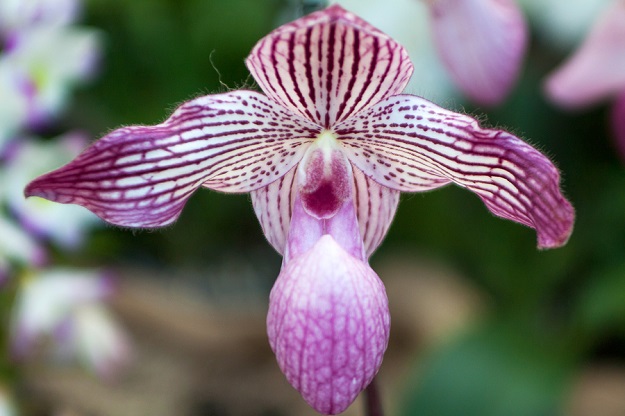
Paphiopedilum orchids are one of the easiest orchids to grow. Give them basic orchid care and soon they’ll be blooming. They usually grow on forest floors and sometimes on branches and birch trees. They produce flowers in every single color you can imagine – that is why growing them is so satisfying.
Some of these types of orchids can bloom for a year, having one flower blossom each time. This is why they are called sequential bloomers. They are tough and a perfect choice for beginners.
In order to guarantee the beauty of your paphiopedilum blooms you need to make sure that all the growing requirements are met. Moreover, going above and beyond just doing the basics is a sure way to achieve vibrant and robust blooms. You want to make sure that the plant is extremely healthy. To help you with this, here are few tips you should follow:
Classify its Type
This is a very important step in successfully growing healthy paphiopedilums and is the first step to take. Classifying them incorrectly could mean death to the plant. Basically they are classified into two classes: the warm section and the cool section. These two classes of paphiopedilums have varying orchid care requirements.
Warm Paphiopedilums can be determined through their spotted leaves. They are often grown in small greenhouses and other similar structures. They can also be grown beside closed windows and require a growing temperature of no less than 50°F. They are typically harder to grow compared to their cool counterparts. Luckily, most paphiopedilums grown today are usually cool ones. The cool paphiopedilums grow best outdoors and beside indoor windows. They are one of the easiest orchids to grow, especially for beginners.
Provide the Best Light Possible
In order for paphiopedilums to bloom they will need adequate sunlight, but this doesn’t mean hours of direct sunlight. This will cause them to burn and even lose their blooms. Typically you can follow the orchid care rule for most of these plants; give them all the light they can stand without burning them.
You know your paphiopedilums are getting the correct amount of light through their leaves. Dark green leaves means that they are getting too much and yellowish ones mean they are not receiving enough. The perfect color would be yellow-green. This means they’re receiving just enough. If you don’t have access to regular sunlight, these plants can also be grown under artificial lighting. A fluorescent bulb 6 to 12 inches above the leaves will ensure them growing healthily.
Grow Them in the Correct Temperature
Paphiopedilums prefer intermediate temperatures of 70-80°F during daytime and 50-60°F during nighttime. Longer exposure to cooler temperatures for weeks at a time will successfully produce blooms. This is especially true for some of its variants with clusters of flowers.
Keep their Roots Moist
An orchid care tip that applies to most terrestrial orchids is to always keep their roots moist. Paphiopedilums grow best in composts that support moisture; one favorite among orchid growers is leaf mold. A trick that many growers use is placing an inverted tray filled with pebbles with an inch of water at the bottom of the pot to provide extra moisture and humidity.
Provide Adequate Drainage and Air Circulation
Because they do need lots of moisture in their roots, sometimes we can overwater them which is a big no-no. Overwatering can kill your orchid. To prevent this from happening to your paphiopedilums, you need to give them adequate drainage.
You can do this by placing pebbles at the bottom of your pots, filling them about a third of the way up before placing your compost. This will keep the roots cool and moist while draining away excess water.
Another tip for these plants is to provide a good source of fresh air. Air movement means the compost dries up fast allowing you to increase the frequency of your watering. This also makes your plants less susceptible to fungal and bacterial infection due to stagnant air.
Mary Ann Berdak is the publisher of OrchidCareZone.com an online destination for orchid growing tips and advice. For more information including a free report on The 5 Biggest Orchid Mistakes and How to Avoid Them visit OrchidCareZone.com.
Related Articles & Free Email Newsletter
7 Ways to Guarantee Healthy Orchids
High Quality Cold-Frame Greenhouses




Comment here